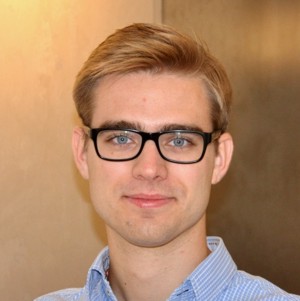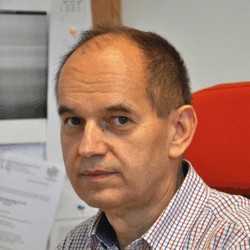Project PRELUDIUM
„Influence of build-in piezoelectric fields on performance of nitride laser diodes”
Project Description
The nitride semiconductors are recently the most revolutionary group of materials. They are finding many applications starting from efficient light emitters through HEMT transistors and solar cells to platform for new quantum information systems. The III-nitride semiconductors thanks to their unique properties are perfect to use at high frequency and in hard environmental conditions like high temperature. They exhibit also high performance but still maintaining equally high reliability. That’s why in many cases they are being concerned as the “silicon of the future”.

The one of the major issues, attracting the scientific community attention is the energy consumption. The t challenges in climate changes related with energy production require development of the low energy consumption devices. The nitride based optoelectronics made already revolutionary changes in lighting replacing incandescent bulbs (max efficiency: 16lm/W) or fluorescent lamps (70 lm/W) by LED lamps (300lm/W). The use of laser diodes as a light sources is even more beneficial because of higher electrical energy-light conversion efficiency. Apart of general lighting the nitride laser diodes finding a place as an efficient source for TV laser projectors, projector for mobile phones (focus free geometry), cooling systems in atomic clocks and wireless communication.
Despite of widespread applications, some of investigated fundamental properties of III-nitride lasers are not well understood yet. One of the major challenges in realizing nitride laser diode is existence of build-in piezoelectric fields, which in general have negative influence on its efficiency. The high electric fields are present in nitride devices due to the large piezoelectric constant of nitrides and difference in lattice constants of (Al,Ga,In)N layers – the basic building blocks of laser diode structure. The goal of this project is to investigate the role of build-in piezoelectric fields on important issues of operation of laser diode, in particular injection of charge carriers into the active region and light emission from wide quantum wells. Using plasma-assisted molecular beam epitaxy (PAMBE) method of crystal growth the atomic precision of grown nitride laser structures can be achieved. By precisely changing the parameters of device structure such as layer thickness and composition, the magnitude of piezoelectric field will be changed which influences the internal parameters of laser diode. Combining both numerical simulations and experimental methods will provide most reliable model of influence of build-in piezoelectric field on operation of nitride laser diode.
Project value: PLN 210 00,00
Project financed by the National Science Centre under the Preludium program.
Abstract in PDF
Project Goal
By achieving the complete understanding of this phenomena in III-nitrides, the control over the electronic band structure and optical properties of the optoelectronics devices will be possible, even before actual device will be created. This knowledge will surely help enhance the laser diode operation parameters and enable adaptation of InGaN laser diodes in new potential applications.
Publications
Project is carried out from 2020 to 2023
Project resulted in the following publications:
- M. Hajdel, M. Chlipala, M. Siekacz, H. Turski, P. Wolny, K. Nowakowski-Szkudlarek, A. Feduniewicz-Zmuda, C. Skierbiszewski, G. Muziol, MATERIALS 15, 237 (2021)
- J. Slawinska, G. Muziol, M. Siekacz, H. Turski, M. Hajdel, M. Zak, A. Feduniewicz-Zmuda, G. Staszczak, and C. Skierbiszewski Optics Express Vol. 30, Issue 15, pp. 27004-27014 (2022)
- M. Sawicka, G. Muziol, N. Fiuczek, M. Hajdel, M. Siekacz, A. Feduniewicz-Żmuda, K. Nowakowski-Szkudlarek, P. Wolny, M. Żak, H. Turski, C. Skierbiszewski, Optics Express Vol. 30, Issue 7, pp. 10709-10722 (2022)
- G. Muziol, M. Hajdel, M. Siekacz, H. Turski, K. Pieniak, A. Bercha, W. Trzeciakowski, R. Kudrawiec, T. Suski, C. Skierbiszewski, JAPANESE JOURNAL OF APPLIED PHYSICS 61, 0801 (2021)
- G. Muziol, M. Hajdel, H. Turski, K. Nomoto, M. Siekacz, K. Nowakowski-Szkudlarek, M. Żak, D. Jena, H. G. Xing, P. Perlin, and C. Skierbiszewski, Optics Express 28, 35321-35329 (2020)
- M. Siekacz, G. Muziol, H. Turski, M. Hajdel, M. Żak, M. Chlipała, M. Sawicka, K. Nowakowski-Szkudlarek, A. Feduniewicz-Żmuda, J. Smalc-Koziorowska, S. Stańczyk, and C. Skierbiszewski, Electronics 9, 1481 (2020)
Research Team
Research team of the project
- mgr inż. Mateusz Hajdel - Principal Investigator
- prof dr hab. Czesław Skierbiszewsk - Mentor

